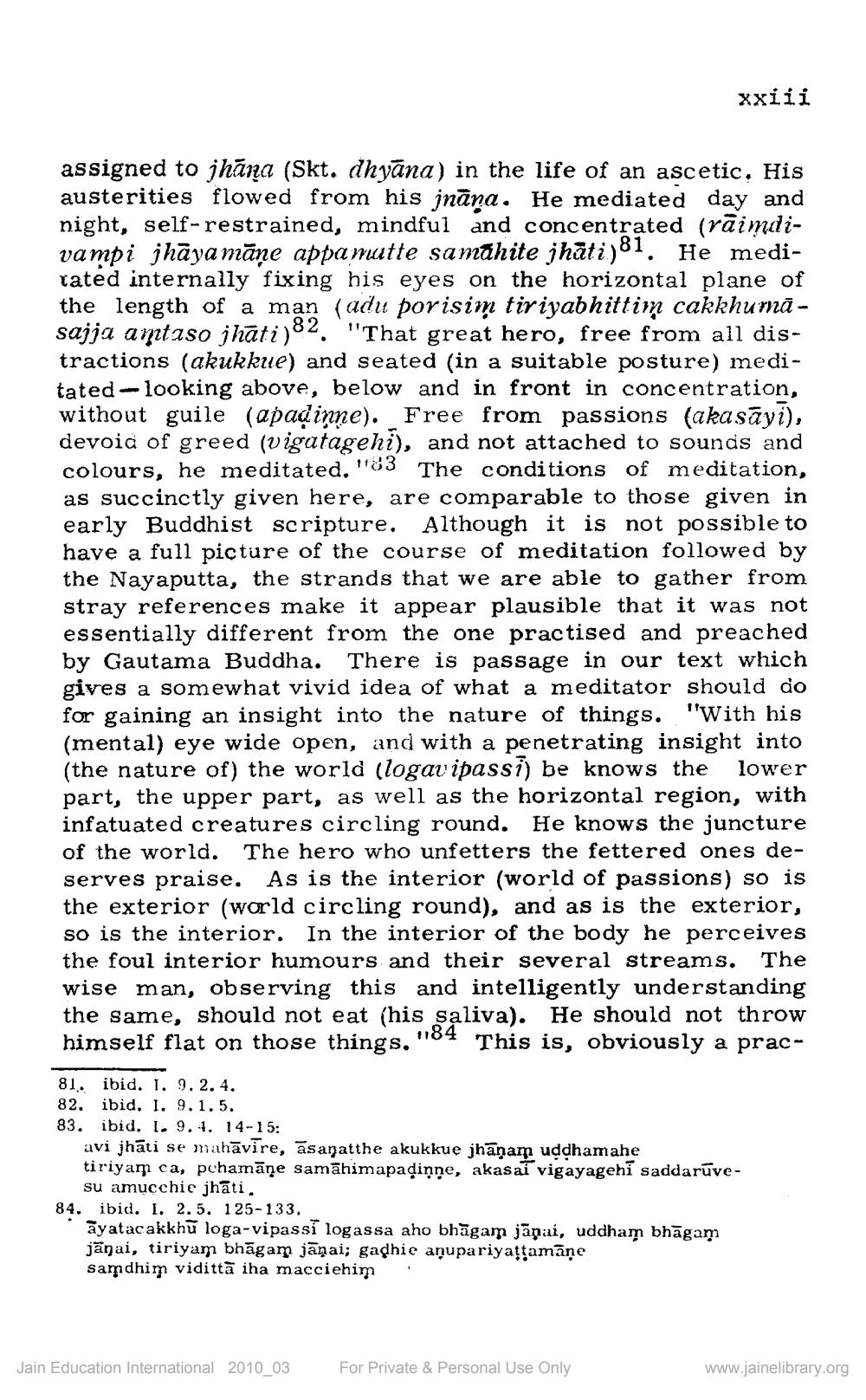________________
xxiii
assigned to jhāna (Skt. dhyāna) in the life of an ascetic. His austerities flowed from his jnāna. He mediated day and night, self-restrained, mindful and concentrated (rāimdivampi jhāya māne appa mutte samáhite jhāti) 1. He medicated internally fixing his eyes on the horizontal plane of the length of a man (adu porisim tiriyabhittim cakkhumā - sajja antaso jhāti)82. "'That great hero, free from all distractions (akukkue) and seated (in a suitable posture) meditated-looking above, below and in front in concentration, without guile (apad inne). Free from passions (akasayi), devoid of greed (vigatagehi), and not attached to sounds and colours, he meditated."83 The conditions of meditation, as succinctly given here, are comparable to those given in early Buddhist scripture. Although it is not possible to have a full picture of the course of meditation followed by the Nayaputta, the strands that we are able to gather from stray references make it appear plausible that it was not essentially different from the one practised and preached by Gautama Buddha. There is passage in our text which gives a somewhat vivid idea of what a meditator should do for gaining an insight into the nature of things. "With his (mental) eye wide open, and with a penetrating insight into (the nature of) the world (logav ipassi) be knows the lower part, the upper part, as well as the horizontal region, with infatuated creatures circling round. He knows the juncture of the world. The hero who unfetters the fettered ones deserves praise. As is the interior (world of passions) so is the exterior (world circling round), and as is the exterior, so is the interior. In the interior of the body he perceives the foul interior humours and their several streams. The wise man, observing this and intelligently understanding the same, should not eat (his saliva). He should not throw himself flat on those things, "184 This is, obviously a prac
81. ibid. 1. 9. 2.4. 82. ibid. l. 9.1.5. 83. ibid. 1.9.. 14-15:
avi jhāti se mahāvire, āsaŋatthe akukkue jhānam uddhamahe tiriyam ca, pchamāne samāhimapadiņne, akasai vigayagehi saddaruve
su amucchie jhāti. 84. ibid. I. 2.5. 125-133.
ayatacakkhu loga-vipassi logassa aho bhāgam jāņai, uddham bhāgam jänai, tiriyam bhāgam jāņai; gaghie anupariyattamāne samdhim viditta iha macciehim
Jain Education International 2010_03
For Private & Personal Use Only
www.jainelibrary.org




